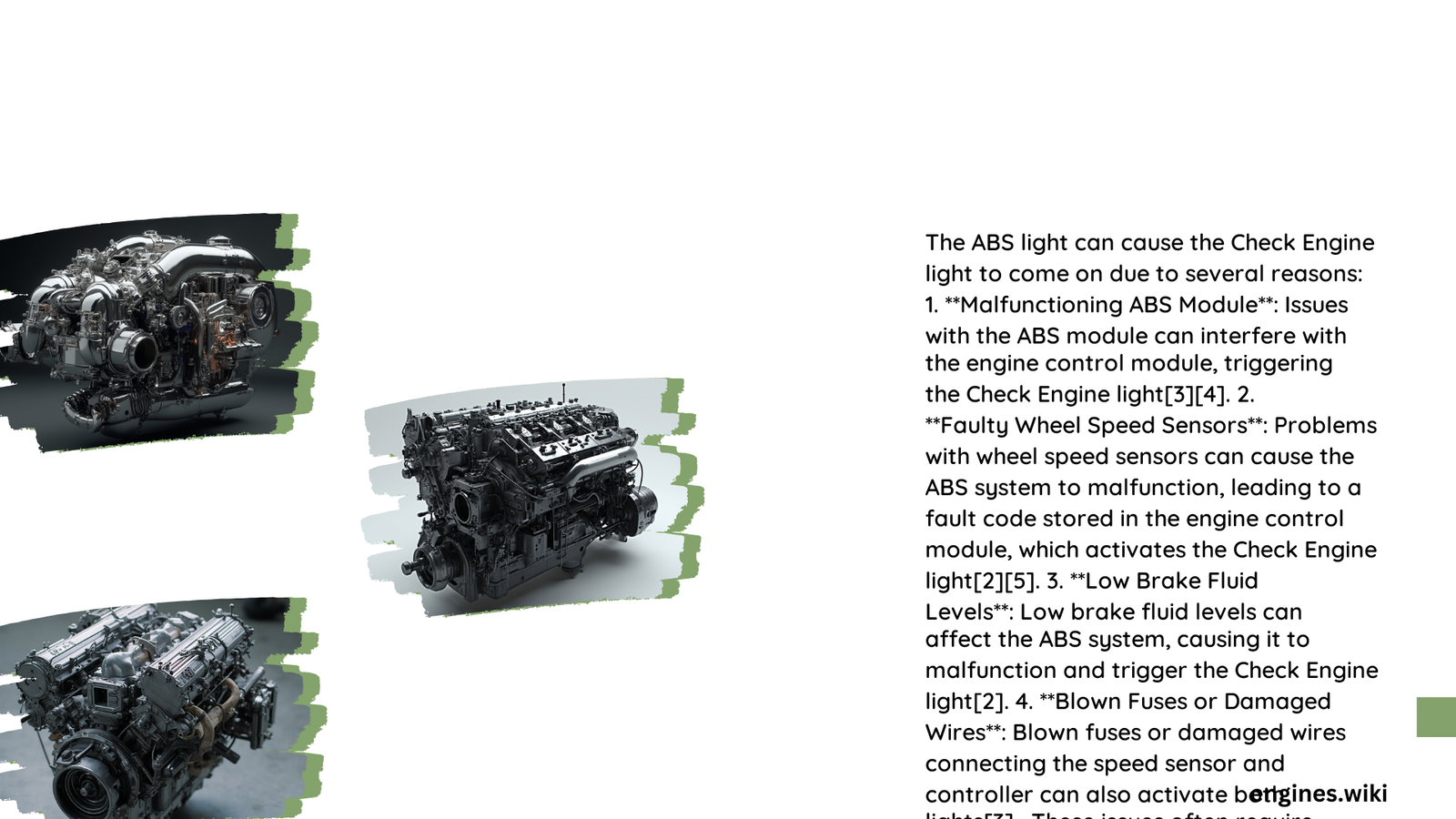The ABS light and check engine light are typically separate warning systems in a vehicle. While the ABS light indicates issues with the Anti-lock Braking System, the check engine light usually signals problems with the engine or emissions system. However, in some cases, an ABS system malfunction can trigger the check engine light, especially in modern vehicles with integrated electronic systems. This guide explores the relationship between these warning lights, common causes, and diagnostic procedures.
What Are the Common Causes of ABS Light Activation?
The ABS light can illuminate due to various issues within the Anti-lock Braking System. Here are some common causes:
- Faulty wheel speed sensors
- Damaged ABS module
- Low brake fluid
- Worn brake pads
- Corroded or damaged wiring
- Malfunctioning ABS pump or valve
Can ABS Issues Trigger the Check Engine Light?

In most cases, ABS problems do not directly cause the check engine light to come on. However, there are exceptions:
- Integrated Systems: Some modern vehicles have integrated electronic systems where a malfunction in one system can affect others.
- Shared Components: In rare cases, certain components or wiring may be shared between the ABS and engine management systems.
- Electrical Issues: A widespread electrical problem could potentially affect both systems simultaneously.
What Are the Specific Diagnostic Trouble Codes (DTCs) for ABS Issues?
When diagnosing ABS problems, you may encounter the following DTCs:
| DTC Code | Description |
|---|---|
| C0035/C0040 | Wheel speed sensor issues |
| C0050 | Right rear wheel speed sensor malfunction |
| C0060 | ABS pump motor fault |
| C0110 | ABS pump motor relay circuit issue |
| C0121 | ABS control module fault |
How to Diagnose ABS Light and Check Engine Light Issues?
Follow these steps to diagnose the problem:
- Use a Diagnostic Scanner: Connect a scanner to read the specific DTCs.
- Inspect Wheel Speed Sensors: Check for damage or debris around the sensors.
- Examine Wiring: Look for corroded or damaged wires in the ABS system.
- Check Brake Fluid Level: Ensure the brake fluid is at the correct level.
- Inspect Brake Pads: Worn brake pads can sometimes trigger the ABS light.
- Test ABS Module: If other components check out, the ABS module may need testing or replacement.
What Are the Implications of Ignoring These Warning Lights?
Ignoring the ABS light or check engine light can lead to:
- Reduced braking efficiency, especially in emergency situations
- Increased stopping distances on slippery surfaces
- Potential engine damage if the check engine light is related to a serious issue
- Higher repair costs if problems are left unaddressed
How to Prevent ABS and Engine Issues?
To minimize the risk of ABS and engine problems:
- Follow the manufacturer’s recommended maintenance schedule
- Address warning lights promptly
- Keep brake fluid at the proper level
- Regularly inspect brake pads and rotors
- Avoid driving through deep water or mud that could damage sensors
When Should You Seek Professional Help?
Seek professional assistance if:
- You lack the tools or expertise to diagnose the problem
- The issue persists after basic troubleshooting
- Both the ABS and check engine lights are illuminated
- You notice any changes in braking performance or engine behavior
Remember, while some ABS issues can be diagnosed and fixed at home, complex problems often require professional attention to ensure your vehicle’s safety and performance.
References:
1. How To Check ABS Codes – Reatta Owners Journal
2. Check Engine or ABS Light? Wheel Speed Sensor Circuit Open
3. Diagnosing ABS Issues: Common Fault Codes – Tower Service Station
